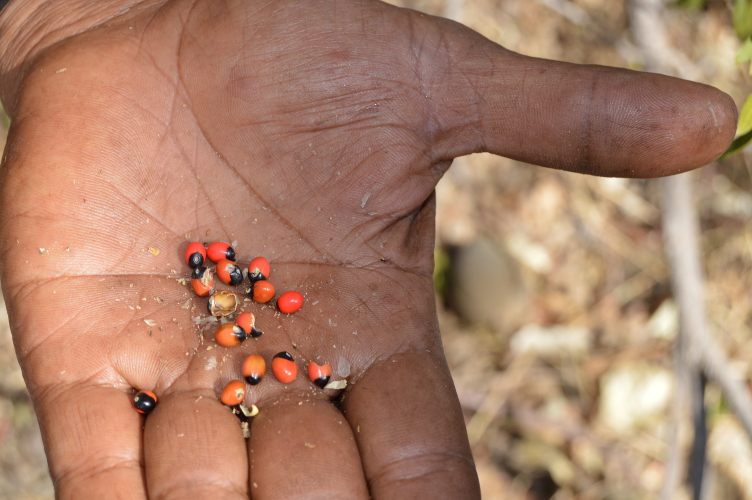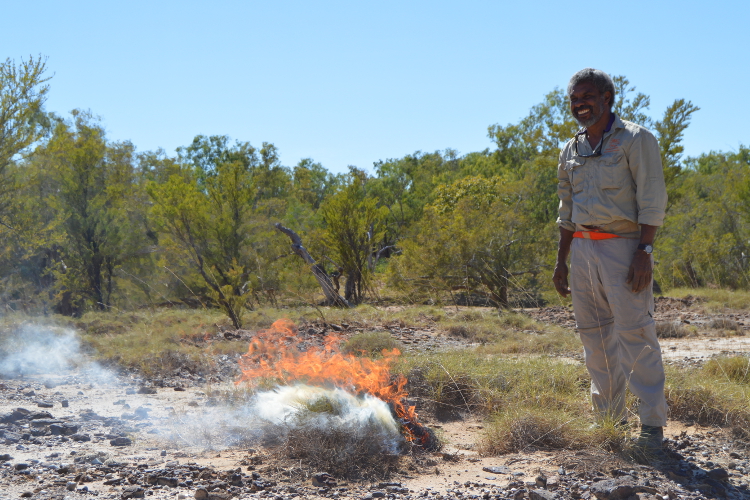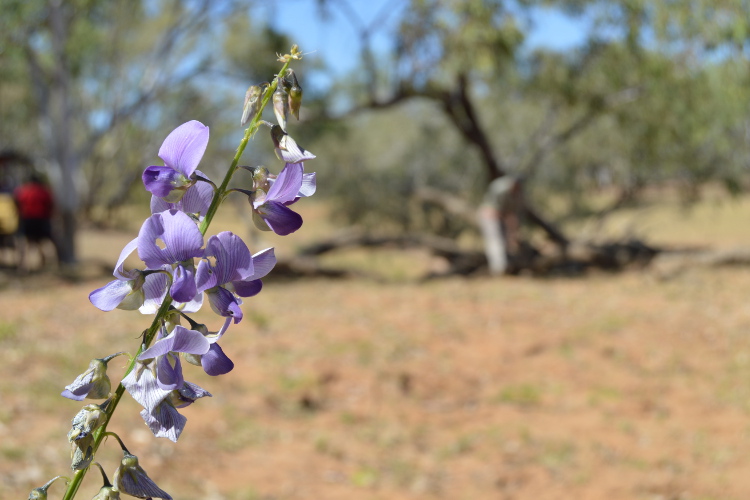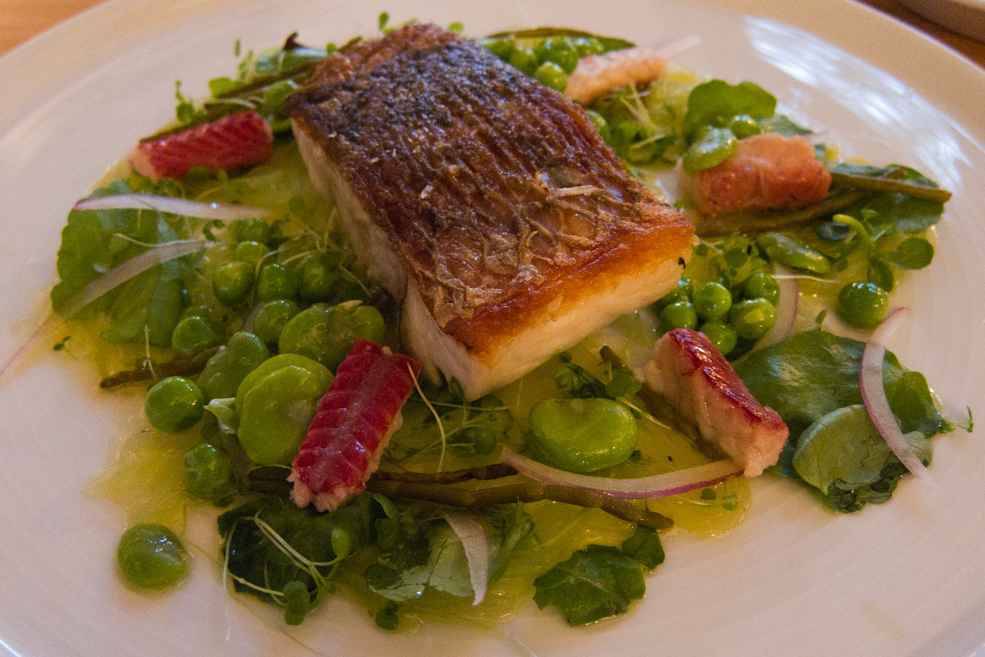 Crab eye seeds are used in bush medicine (highly toxic). Image by Kate Armstrong / Lonely Planet
Crab eye seeds are used in bush medicine (highly toxic). Image by Kate Armstrong / Lonely Planet
‘We are just going to swing by the supermarket,’ announces Neville Poelina, co-owner (with his wife, Jo Camilleri) of Uptuyu Adventures uptuyu.com.au and Nyikina man (an Australian Aboriginal group in Western Australia). ‘And while we’re at it, the chemist and bakery, too.’ So begins a bush tucker and bush medicine experience in the remote Western Australian outback, at Udialla Springs on the Fitzroy River, 300km east of Broome.
On our way Neville tells me about how early European explorers failed to understand the importance of Australia’s hundreds of tree and plant species. They dismissed the scrubby vegetation, not realising the native plants’ nutritional and medicinal uses. These days, it’s a different story: food and pharmaceutical industries have caught on to the value of the ‘superfoods’ deriving from native trees but (to Neville’s astonishment) not many seek the advice of the traditional owners. According to Neville, ‘this isn’t rocket science; we have been using plants as food – ‘bush tucker’– and medicine for thousands of years. My people have the oldest intellectual property in the world. Our food is our medicine and our medicine is our food.’
We pull up at the side of the road but there is no neon sign indicating a supermarket chain. Rather, there stands a miniritchie tree (Acacia grasbyi). Its reddish-brown trunk is twisted and clusters of faded yellow flowers hang from its branches. ‘This tells me about the six seasons we follow,’ Neville explains. ‘When the flower blooms it’s time to catch black bream.’

Udialla Springs is desert country, where tangy fruits are abundant (including, incredibly, date palms – a legacy of the Afghan camel traders who were in this area in the late 1800s). But, as Neville explains, indigenous people all over Australia use whatever is at their disposal: the ocean regions provide shellfish and fish, the high country offers abundant berries, and the rainforests produce citrus-flavoured fruits, as well as herbs and spices. Over the next three days, Neville points out scores of plants, trees, and vines that not only contain nutritional benefits, but are integral to his customs and culture. He chews, spits and crushes fruits, seeds and leaves, and implores us to nibble and smell them.
The simplest form of nutrition is from plants that need no preparation. There’s the gubinge (or kakadu plum; Terminalia ferdinandiana), a tiny berry the size of a thumbnail that provides 100 times more vitamin C than the average orange and the magabala fruit or bush banana (Marsdenia viridiflora), a sweet, pulpy fruit that’s high in protein. There is also one that tastes like a snow pea, and is used for infants with sore ears. He calls it simply the ‘bird flower’ (indeed, it looks remarkably like a hummingbird).

But it’s an ant hill that prompts Neville to break into his wide, cheeky smile. As he gently hits around the edge of the large crimson-coloured mound, seeds tumble out of the cracks. ‘This is our bakery! You want single grain? Multigrain? You just keep hitting until you find the flour bin you’re looking for, collect the seeds and take them away to grind into flour. The ants have done all the work for you.’
It’s not always so easy. Many fruits and seeds, such as the highly poisonous cycad nuts, must be prepared carefully beforehand to leech the toxins. Others shouldn’t be touched at all. Neville points out – and strongly cautions against brushing past – a small tree he calls the ‘pussy cat bush’. If you touch it and then inadvertently touch your mouth, you’ll have severe diahorrea. ‘I used to carry a branch and rub it on the teacher’s chair each time he gave me a belting,’ he laughs.
Medicinal plants are abundant here too. Crushed, the leaves of the miniritchie stop the itch from a mosquito bites. The snake vine, a common heart-shaped vine is the ‘after party drug’ according to Neville: ‘If you are hungover or burnt out, tie it around your head. It works well against migraines.’ Then there are multi-purpose plants, such as soapbush wattle (Acacia holosericea). ‘When it’s green, the seed pod is used as a soap and it’s a great skin toner. It makes fantastic fire wood and is excellent for corrals as it’s so strong. Plus it’s good for weapons; it holds its edge when sharpened,’ says Neville.
Spears were used to hunt animals: crocodiles, kangaroos, emus and goannas, their lean meats are high in protein and low in fat. Neville jokes that he’s gone hunting enough for one day and pulls out a packet of kangaroo tails from the supermarket in town. After collecting a large pile of wood, he lights a fire, wraps the tails in foil and, after the flames have burnt down, buries the silver package in the hot coals. An hour later, after removing the foil, he knives through the tails to divide them into pieces; the meat is a gamier, and much sticker version of oxtail, with a delicious smoked flavour. As Neville smothers the coals he explains the various uses of ash in Aboriginal Australian socirty: men paint their bodies with it during ceremonies, and midwives once used it darken a newborn babies’ skins so they’d not be declared ‘coloured’ and removed from their mothers.
It’s fishing time on the banks of the Fitzroy River today. Neville winds in a hand line, hoping he’s hooked a barramundi, common to these waters. But the bait is whole. The fish aren’t biting. Unfazed, Neville yells over his shoulder to me, ‘You could beat the roots of a mangrove so that the tannin and sap escape. This anaesthetizes the fish and brings them to the surface.’
‘But’ – he explains the tradition of always living sustainably with the land – ‘we’ve already eaten. Remember, we only ever eat the ‘fat’ off the land. Nothing in poor condition and nothing for the sake of it.’
The consummate teacher, Neville reinforces his point... Sometimes tourists scream when they see a spider so I ask ‘em: ‘Whaddya want me to do – kill it!?’ They usually nod. ‘Ok, then’, I say, ‘it’s bush tucker time: how do you want it cooked – grilled or fried?’.
